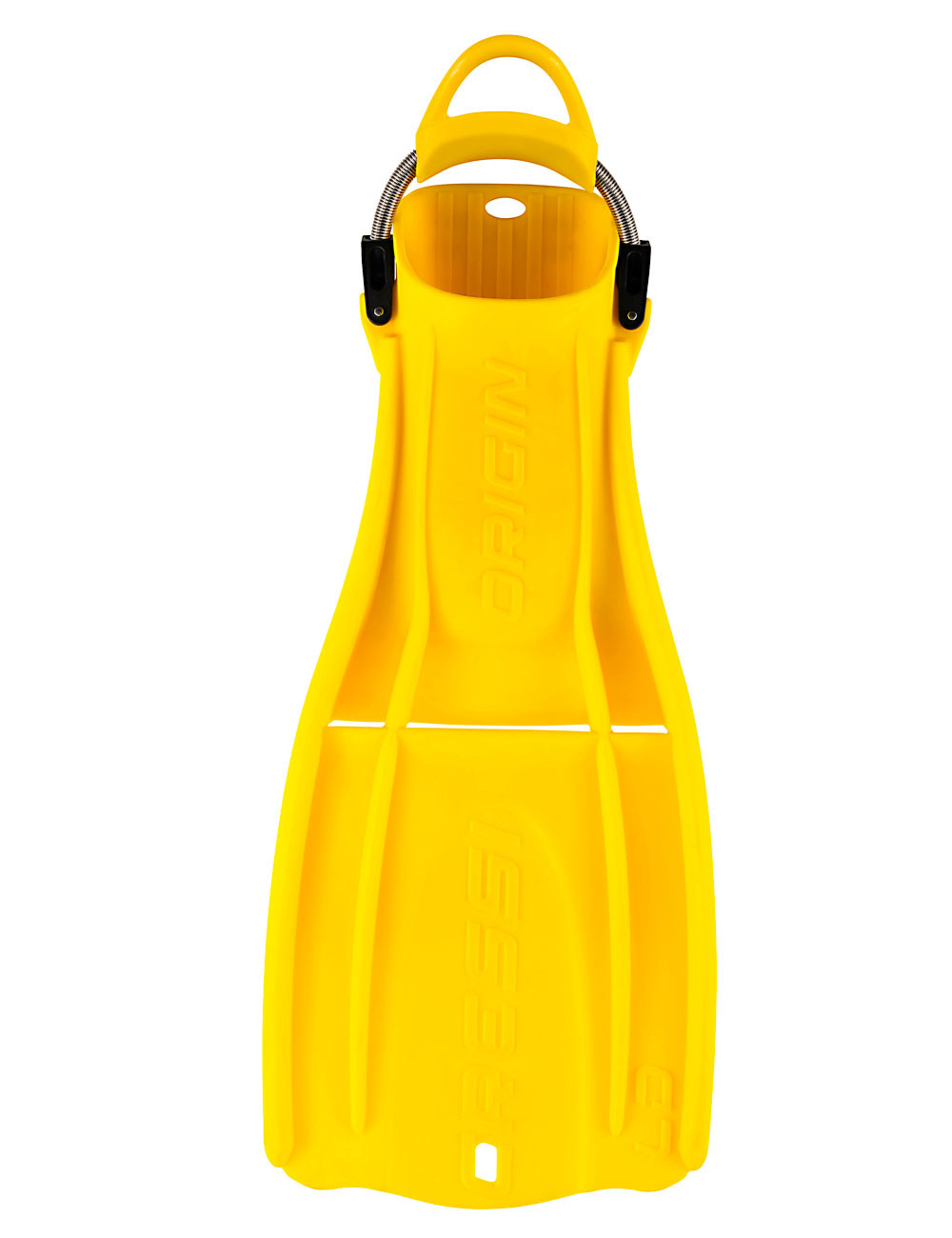


ORIGIN LD FIN YELLOW
Description:
In 1950, long before technical diving was a concept, Cressi revolutionized the diving world with the introduction, along with other rubber models, of the RONDINE COMMANDO USA fins. These fins were originally designed for the U.S. Military Underwater Demolition Unit (UDT) and were widely used in the 1960s, 70s and 80s. Today, ORIGIN fins perpetuate this historical legacy by taking advantage of all the Cressi experience in dive fin manufacturing and design along with the new technologies and materials available today.
ORIGIN fins are perfectly adapted to the demands of technical diving due to their characteristics, resistance to abrasion and fracture, apart from a muscular design and mono-material manufacture, but they are also widely used by recreational divers as they provide good stability when finning, adequate power and are versatile for different types of finning.
True to the original designs and patents, they offer rubber versions with positive/neutral or negative buoyancy:
They have in common the exclusive Cressi “foot pocket under the blade” construction: Now with an increased angle of 5% (15º in total), the blade is born directly from the top of the foot pocket, transmitting all the effort generated by finning without energy loss. It is ideal for relaxed finning without forcing the tibialis anterior or calf muscles and channels the water from the ankle to the final edge of the blade, unlike traditional models, in which the foot pocket has no contribution whatsoever to the forward motion. In addition to improving fin directionality, this design provides 10% to 15% more performance than the fin's blade surface area.
All of them are ideal for excellent maneuverability.
Stainless steel AISI 316 springs are self-adjusting as standard. Springs of various sizes available as replacements. Angled buckle keeps the spring-loaded straps in optimal position on the heel cup. Simple pin design allows for easy replacement of straps if necessary.
IMPORTANT NOTE: The buoyancy level of a fin is independent of its weight out of the water as it depends solely on the density of the materials used and their specific weights once submerged. Although we produce two different levels of buoyancy, these vary according to the fin sizes due to the different incidence of the weight of the spring strip with respect to the fin material itself and, obviously, according to the density of the water in which they are used, apart from whether it is fresh or salt water, as this is not the only factor that influences its density.
The negativity or positivity of a fin varies a few tens of grams submerged and should not be overestimated over other much more important factors such as its efficiency, versatility in different situations, finning comfort, starting power or ability to maintain an adequate cruising speed in continuous finning.
Technical Data:
Datos Técnicos:
| S/M | M/L | L/XL | ||||
| WEIGHT | 1139 g | 1360 g | 1449 g | |||
| FRESHWATER BUOYANCY | 0.5 g | -3 g | -5 g | |||
| SALT WATER BUOYANCY | Neutra | -3.1 g | -5.2 g | |||
| MAXIMUM LENGTH | 52.5 cm | 58.5 cm | 60.5 cm | |||
| MAXIMUM WIDTH | 23.5 cm | 24.5 cm | 24.5 cm | |||
| INNER WIDE FOOTPOCKET | 10.4 cm | 10.5 cm | 11.4 cm | |||
| HIGH INNER FOOTPOCKET | 8 cm | 9 cm | 9 cm | |||
| FOOTPOCKET DEPTH | 22.5 cm | 27.5 cm | 28.5 cm |
Sizes with Diving Boot:
| Standard Sole Boot | Heavy Sole Boot | |||
| Size S/M | 38 a 41 | 36 a 40 | ||
| Size M/L | 42 a 45 | 41 a 43 | ||
| Size L/XL | 46 a 49 | 44 a 47 |
Underwater photographer Álvaro Herrero, better known in the photography and diving...
A partnership for the conservation of our oceans: Innoceana and TDS join forces to...